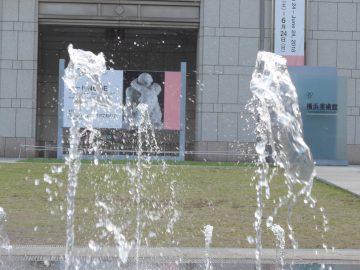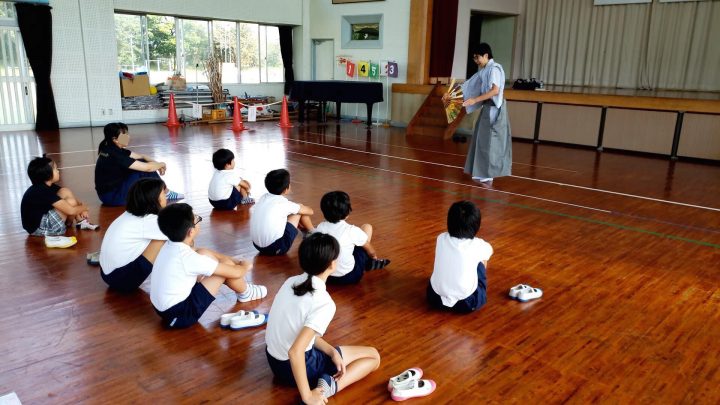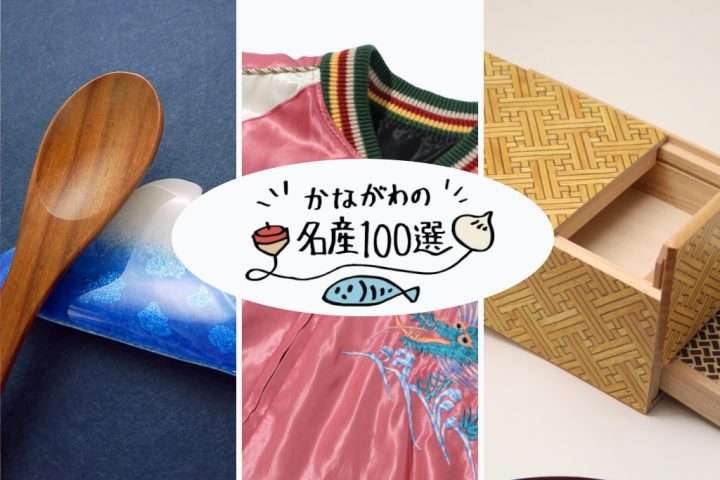Female college students go! ~ Female Gidayu performer Takemoto Komanosuke performance at KAAT ~

Hello everyone!
It's still cold out, but this is our first Magcal report in a while!
This time, the play was performed at the Kanagawa Arts Theatre by two female college students, Takiko Izumi and Juri Fukushima.
KAAT Takemoto Komanosuke performance, second installment, "Taiheiki Chuushin Koshaku" (Taiheiki Chuushin Koshaku), seventh act, "Kakioki no Dan"
He reported on the following:
And this time, at their suggestion, the report will be in the form of a dialogue.
Please take a look at this dialogue-style report, which contains the candid impressions of the two hosts, who say it was their first time seeing classical performing arts up close.

Fukushima : Why did you decide to see the "KAAT Takemoto Komanosuke Performance"?
Izumi : I like musicals, but I'm studying business administration at university, which is completely unrelated to musicals, and my hobby is going to the theatre. I don't have a chance to see classical performing arts.
I've always been interested in seeing what it was like. The tickets for this performance were reasonably priced, so I went to see it. What about Fukushima-san?
Fukushima : I often go to see musicals and plays, but when I hear the term classical performing arts, I get the impression that it's something far removed from me.
However, I've recently become interested in Kabuki, and since Kabuki was a form of entertainment for the masses in the Edo period, when I watch it I think about how people at the time must have laughed and cried while watching it.
It became easier to feel close to it... The Edo period is a long time ago, but I felt like it was something close to me.
I was interested to learn that the female Gidayu performers in this performance were popular and idol-like in the past. Izumi, when you actually saw it, was it different from what you had imagined?
Izumi : The first time I heard Gidayu, without knowing anything about it, I was overwhelmed...it was so powerful and I was so surprised.
This time, we were close to the stage, so we were able to feel the tayu up close and enter the world of the story.
I also naturally started to want to listen to the talk. I think I was able to enjoy this in many ways.
Fukushima : I had the image of Gidayu as just a recitation play where the performers just read from a script, but it was completely different to that image!
You're still reading, but it has a rhythmic flow...
Izumi : It's just like theater. I can see the scene in my mind even though he's just sitting and talking! I thought he created a perfect worldview.
Fukushima : This time, Komanosuke played eight different roles, from the narrator to the grandfather, all by himself.
The flow of the story made it easy to forget that he was playing eight roles, and the way the story progressed was rhythmic and comfortable.
Izumi : Because each voice has its own expression, it was very easy to grasp "this person is speaking" and "this is the kind of conversation they're having."
Fukushima : I had always thought of the shamisen as something like background music, played subtly, but
Tsuga Hisashi's shamisen performance seemed to stand alone as a single performance. I think it's also fun to come just to listen to the shamisen.
Izumi : That's true. But the timing of the shamisen players Tsuga Hisashi and Komanosuke is amazing.
Fukushima : It matches perfectly. The story gradually builds up, and the sound rings out at the perfect timing!
I had the impression that the sound of the shamisen was simple, but it can produce a variety of sounds, and I was overwhelmed by the power of the instrument when it was played vigorously.
Izumi : Your timing is perfect. Komanosuke is the one who will be in the media, but I want people to enjoy the sound of the shamisen too.
Fukushima : Also, when I saw videos of Komanosuke online, he gave off the impression of being a gentle and calm person, like a kind and gentle grandma from the neighborhood, right?
Izumi : Yes, yes, I thought he was a very approachable person. But when he was on stage, his expression was completely different from what I had imagined.
The contrast between the intensity of his speech and the intensity of his words is amazing! You won't understand unless you watch it, so I want you to watch it! (laughs)
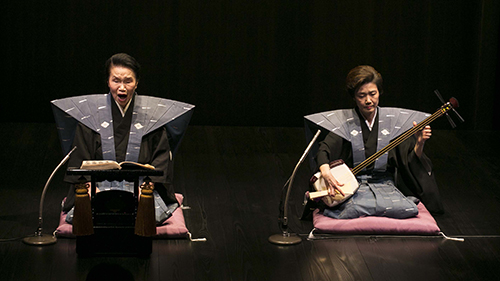
©KAAT Kanagawa Arts Theatre
Fukushima : If you watch the video before going to the play and then watch Komanosuke's performance, I think you'll be surprised at the difference, and you'll be able to appreciate Komanosuke's charm even more.
Izumi : "Takemoto Komanosuke: The Life of a Female Gidayuu" is also on the website, and I read it, but... Gidayuu has nothing to do with our lives at all; it's in a different world, isn't it?
It was exciting to learn about the life of someone who had no connection to me.
Fukushima : Just learning that there are lives like this out there that I had no idea about was fascinating, like watching a historical drama.
Izumi : It's interesting that we live in the same era. Learning about Komanosuke's roots changes the way you look at the stage.
I once again realized that people who have had experience since childhood are definitely different.
Fukushima : The play this time was a family story surrounding the Chushingura raid, so even students like us could easily imagine it just by hearing the keyword "Chushingura."
I was able to get into the story. I was also interested in the idea that each family member was hiding something from someone else.
Izumi : The story itself is a tragedy in that the protagonist, Jutaro, kills his son in revenge for his master, and his wife commits suicide.
I thought that each character other than the protagonist had their own story, which added depth to the story.
The way Orie, the wife who becomes a prostitute to support her family, makes me think as a woman, and the scene where she kills her own child for her own ambitions makes me think as a woman too.
It was impressive because it was so far removed from how we feel today. What's more, the way he spoke was surprisingly easy to understand... I was glad that I could hear every single word he spoke.
Fukushima : Also, this performance was on a special stage, which I think created an atmosphere that made it easier to get into the story.
The stage and the audience were so close that it felt like there was a sense of unity. It was a really comfortable space.
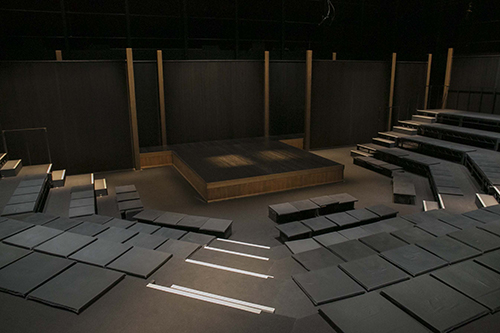
©KAAT Kanagawa Arts Theatre
Izumi : Yes. I think being so close to them really drew me into the story and I could really feel the power of the two of them.
Fukushima : I think it was a valuable experience to be able to feel things like his breathing. I was even able to see Komanosuke's facial movements and the changes in his muscles.
There was a lot to enjoy, not just paying attention to facial expressions, watching movements, and listening to the story.
Izumi : I thought it was amazing how the emotions of each character could be conveyed through facial changes. Even though each person was reading the same script, they were creating a world for eight people...
I think the reason I was able to feel the change in his expression was because we were so close.
Fukushima : It's a very simple stage with nothing unnecessary in the space, but I thought it was a tasteful, modern space where modern elements were nicely blended with the classic aspects of the Noh stage.
I think that special stage is worth seeing.
Izumi : And don't you think it's hard for students like us to get into classical performing arts? It has an image of being very prestigious.
Fukushima : That's right. You start wondering, "What should I wear?" and "How should I behave?"
Izumi : In that respect, KAAT is a theater that also stages musicals and plays, so it was easy to come and see them.
Fukushima : I didn't have to be on edge, and I was able to go there with a relaxed attitude.
Also, since we are all under 24 years old, we were able to see this performance for just 2,000 yen, and it was a special experience to just drop into KAAT and experience classical performing arts.
(*Discounts for those under 24 years old vary depending on the performance.)
Izumi : Really! I'm sure university students don't know that they can see a performance like this for this price, but I can say with confidence that it's definitely worth seeing!
Fukushima : The clientele was mostly older people and I'm sure there were many repeat customers, but I think even beginners like us were able to absorb a lot and come back.
Izumi : When we saw it, about half of the audience were hearing Gidayu for the first time, so it was great that there was commentary for them.
Fukushima : Even if the synopsis is written in the program, people don't usually read it carefully to prepare themselves, do they?
Whether you can get into the story or not can be completely different depending on whether you listen to the commentary before watching or not.
Izumi : I felt the same when I saw it at KAAT this time, but it's a little sad that not many people of our generation come to see it.
It seemed like most of the people there were elderly.
Fukushima : Since you are living in Japan, I would like you to experience at least one traditional Japanese performing art and feel something from it.
Izumi : Being in that space is something special, so it's definitely something you should see.
Fukushima : I think it's cool to have listened to Gidayu in your 20s.
Izumi : That's great, "I've heard Gidayu."
Fukushima : I think that in the future, even after I enter society, I will have many opportunities to talk to older people.
I think that just by saying, "I've listened to Gidayu," the impression people have of us will be different.
Izumi : I think people who love musicals like us will be able to enjoy it too.
Fukushima : I think most people are wondering, "What is Gidayu?" but it's not that different from a musical!
It's a musical in the sense that it features songs and words, and the story progresses to the accompaniment of a shamisen, but since one person plays multiple roles, it's a play in itself.
Izumi : That's true! I want everyone to feel Komanosuke's passion. There are less than 30 female Gidayu performers in the whole country, right?
I think it's an incredibly valuable experience to be able to watch a performance by one of these Living National Treasures.
Fukushima : I think everyone should see it at least once in their life, and I think some people will get hooked after seeing this performance. I also want to go to the third instalment in October.
Izumi : I'm planning to go in October too! (laughs) You'll get to see a female Gidayu performer up close, which is something you don't often get a chance to see!
This kind of opportunity is rare, so you should definitely go see it while you're a university student and have the time! Let's all become wonderful adults by listening to Gidayu!
<Writer profile>
□ Takiko Izumi
Tokyo University of Science, School of Management
Policy Studies 2nd Year
I mainly like watching musicals such as Takarazuka and Shiki.
□ Juri Fukushima
Ferris University
3rd year student, Department of Communication, Faculty of Letters
I love both performing on stage and watching performances.
